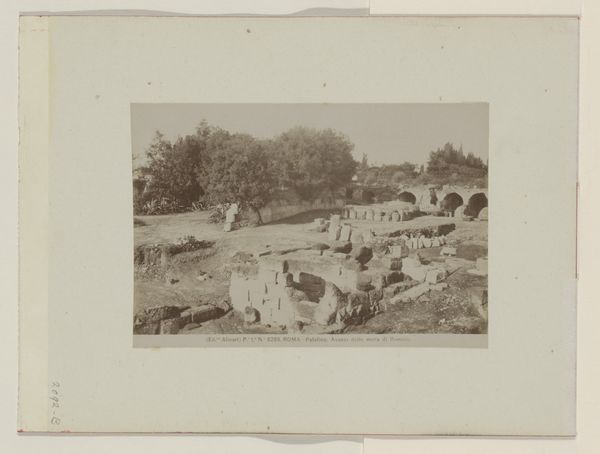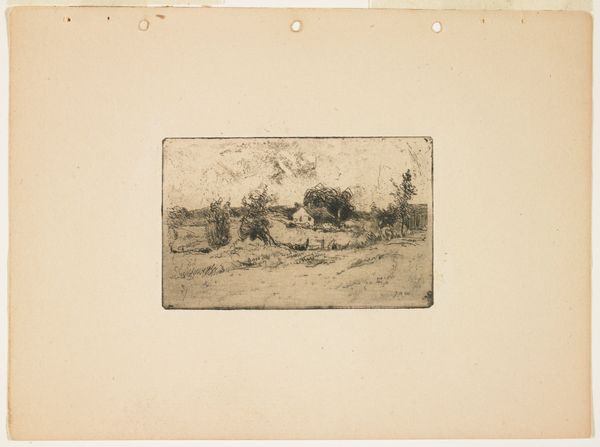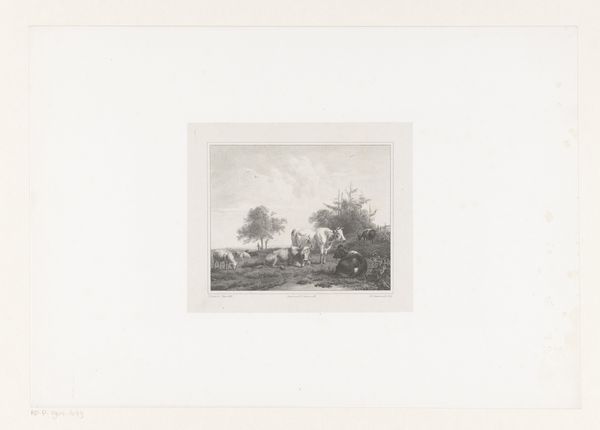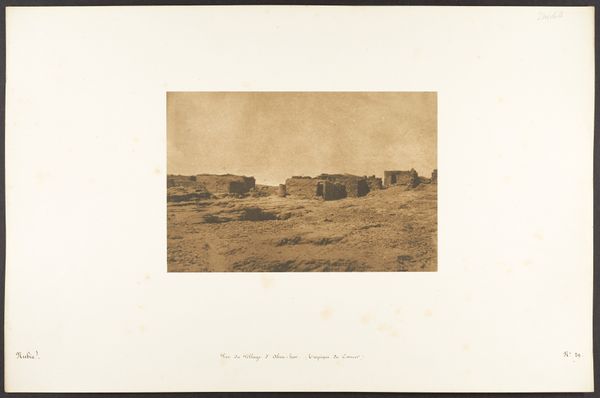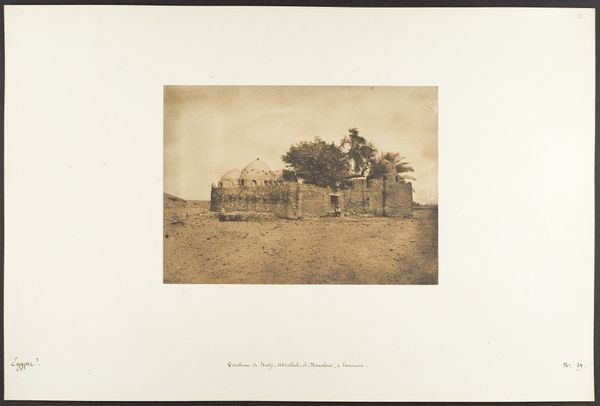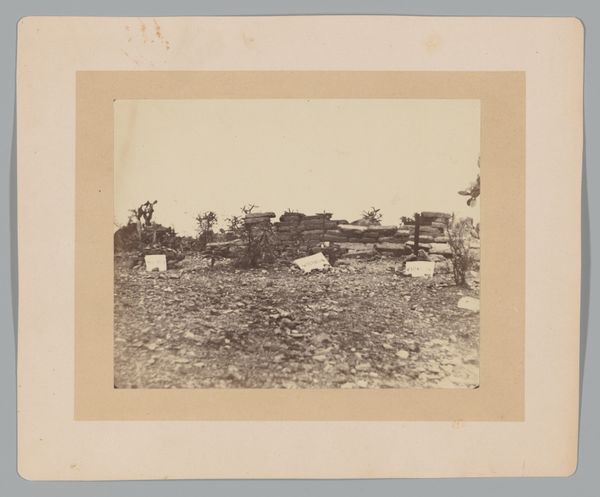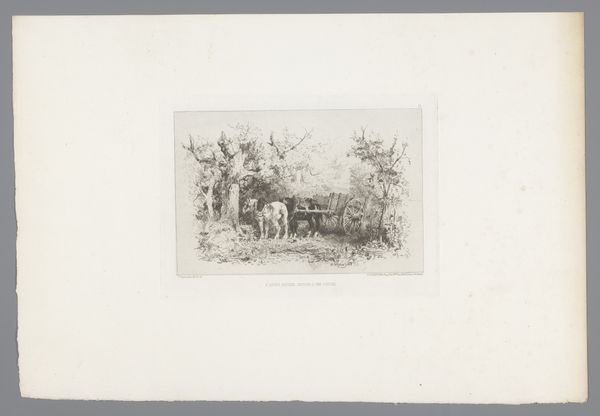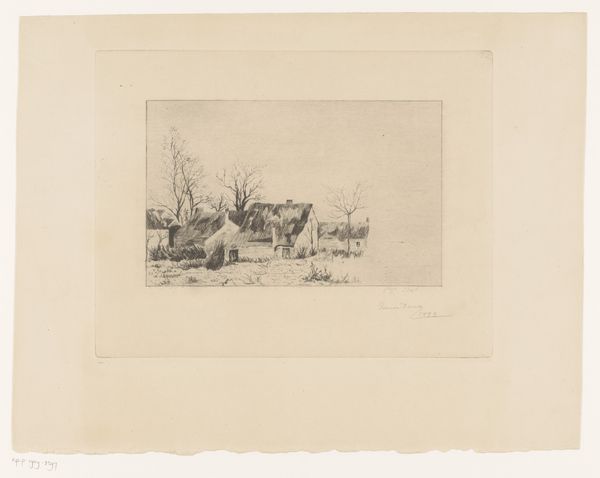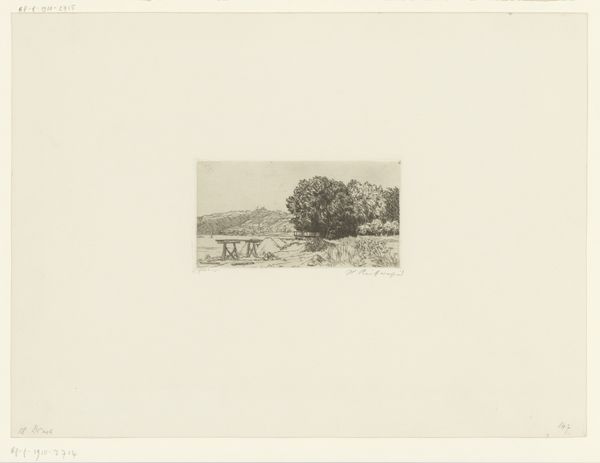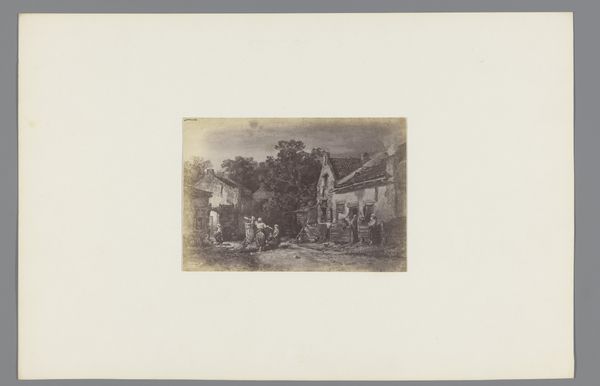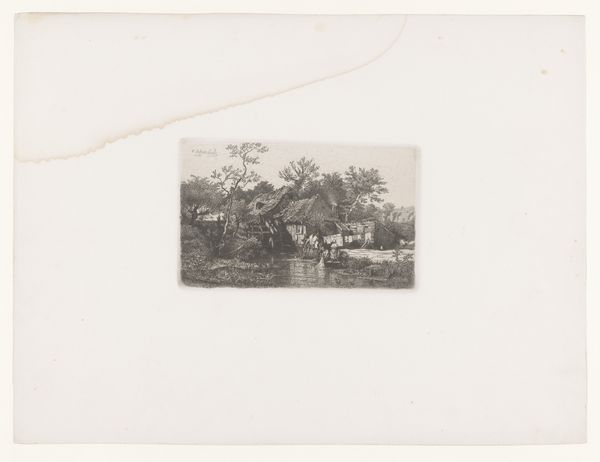
Dimensions: height 389 mm, width 559 mm
Copyright: Rijks Museum: Open Domain
Curator: Alexandre Calame, a Swiss artist of the Romantic period, created this piece, titled "Ruïnes in het zonlicht" which translates to "Ruins in Sunlight," sometime between 1852 and 1855. It appears to be a print—specifically an etching and tempera drawing on paper. Editor: It's undeniably melancholic, isn’t it? The stark light emphasizes the crumbling forms, and the empty space really speaks to a sense of loss and historical weight. Curator: Yes, Romanticism often used ruins as potent symbols of the past and the fleeting nature of human endeavor. We need to consider whose history these ruins embody, and how their depiction reflects power structures of 19th century Europe. For whom were these romantic ruins really "romantic"? Editor: The arches! Even in their ruined state, they retain a potent, almost haunting grace. The archway itself is such a powerful symbol of transition, or maybe even thwarted access in this context. And the single tree to the right looks like a forlorn sentinel. Curator: Absolutely. Calame situates the ruins within a broader social commentary too. Romanticism was partly a reaction against the industrial revolution, critiquing the loss of agrarian lifeways; however, we must acknowledge the relationship to imperial expansion, the ways nostalgia naturalized hierarchies of power... Editor: This interplay between nature and architecture also feels intentional. The slow, inexorable encroachment of plant life suggests time reclaiming human constructs. Is that nature winning or merely obscuring? The way the sun touches them suggests even ruination has its beauty. Curator: True. Yet we must also remain critical. Who had the luxury to romanticize ruins, to aestheticize the decline, and who were, perhaps, subjects *of* ruins? This raises important considerations for those of us living among physical ruins, those displaced through disaster capitalism or warfare... Editor: So much to unpack. This initially mournful landscape actually provides a powerful portal to engage historical processes still operating in the present. Curator: Precisely. Art history is never neutral, and this landscape, despite its surface-level beauty, reveals critical insights when situated within a larger web of power and historical awareness.
Comments
No comments
Be the first to comment and join the conversation on the ultimate creative platform.
